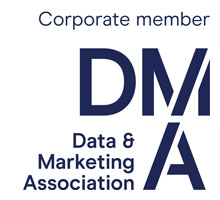Unlocking the Power of Market Research: How Behavioural Frameworks Drive Effective Insights
We Live Context – 19 July 2024
Source https://welivecontext.com/blog/unlocking-the-power-of-market-research-how-behavioural-frameworks-drive-effective-insights
The true test of market research lies not in truth, but in utility. As researchers and consultants, we don't need to understand customers completely—just enough to influence, persuade, and connect with them. This is where behavioural change frameworks come into play.
Frameworks are fundamental to how we look at behavioural science at We Live Context. They categorise actions to provide a structured understanding of how and why they occur. One such framework is COM-B. A popular framework that allows researchers to move through key barriers of Capability, Opportunity, and Motivation towards evidence-based interventions. Let’s take a closer look COM-B as a way of showing the power of such frameworks. A good example of COM-B being used is with StopApp- an app by Public Health England designed to help smokers quit. The task of the behavioural framework here was to increase attendance at a Stop Smoking Service. Given the NHS incurs over £1 billion annually due to missed appointments, this is an area where behavioural initiatives have the scope to make a significant impact. For example, one behavioural initiative introducing SMS reminders led to a 95% increase in attendance.
So how was the COM-B framework helpful in this instance? Let's break this down into its five key benefits.
Five ways the COM-B framework supports market research:
1. Focus
Using a framework gives the research a clearer direction of travel. For the behavioural framework to take effect, we must first specify the behaviour we are looking to change. In this case, that behaviour is getting smokers to book and attend an initial appointment at a stop smoking service. Specifying a specific behavioural outcome prior to the research allows researchers to design questionnaires and conduct analysis which looks at the specific behavioural barriers we are addressing.
2. Complexity
A good framework is not about identifying one silver bullet, instead it understands there are different ways behaviour can be triggered or influenced. In understanding the issues with the StopApp, several barriers were identified within the COM-B framework including:
a. Capability – A lack of knowledge about how to book the stop smoking services and its purpose.
b. Opportunity - Difficult mode of delivery and difficulty booking.
c. Motivation - A feeling that the service would not be helpful or worthwhile.
Here the framework ensures we cover multiple bases. Consider discovering a barrier to the capability of booking a service and a barrier to the ease of use with the service itself. Improving both how the service is communicated and the design of the design itself taps into two potential barriers in a complex system.
3. Interconnection
A behavioural framework allows us to see how each insight sits in relation to other insights. This occurs for frameworks where constituent parts relate to one another. For instance, people need to have the physical opportunity to use the StopApp to then have the capability to decide about its potential benefits. Understanding how the different elements of the framework interconnect give structure and organisation to any insight, so we know how a plan of action can influence behaviour.
4. Practical
Behavioural change frameworks are inherently practical. The COM-B framework connects to potential interventions which can address each element of the framework. Consider below how the framework is helpful in devising interventions tailored to each barrier.
Capability
Barrier: Poor knowledge of how to book the service
Intervention: Education/Enablement - clearer instructions on how to book the service on the app as soon as they login
Opportunity
Barrier: Poor or difficult mode of delivery
Intervention: Environmental restructuring - allow for booking via text to require less effort in booking the service.
Motivation
Barrier: Belief that the service will not be able to make me quit smoking
Intervention: Persuasion - reframing the messaging to focus on what smaller objectives along the journey can be easily achieved rather than the larger more difficult goal of quitting smoking altogether.
5. Ease – Finally, the key to delivering practical insights is that they are easy to understand and remember. Putting an insight within a framework gives it a better chance of being remembered and actioned because we can process them more fluently.
Summary
Three key points to consider when using behavioural frameworks:
1. They can (and should) be used throughout the project cycle
Behavioural frameworks are most effective when used as a lens to apply throughout a project’s lifecycle. They give research a clear focus in its design, an understanding of its complexity in analysis and practical solutions in the recommendations.
2. They are industry agnostic
There are many different behavioural frameworks, and these are not limited to specific industries; any customer-facing business aiming to increase sign-ups or sales is in the business of behaviour and can benefit from a behavioural framework. Consider an example within a different industry – for example, the tech world. The success of a project management software ends not with technology itself, but with behaviour. Questions such as “will employees be technically capable of using the software?’ ‘will they have ample opportunity to use the software in their work lives?’ and ‘do they have an incentive or motivation to engage with the software?’ will be critical to the success of the product.
3. Small changes can have a large impact
If significant changes are needed, there may be a temptation to think the product or service needs to be radically changed. However, the use of a behavioural framework may identify some small behavioural issues which can have a large impact. A powerful example of a change like this is the introduction of a "checkout as guest" button – aptly named the $300 million button due to its significant impact on conversion rate. Customers were often prevented from proceeding because they had no account with the website, identifying this key opportunity was critical for increasing conversion rates despite not changing anything about the product on offer.
We are integrating behavioural frameworks like the COM-B framework into our work because we know the importance of moving from insight to solution.
Want to learn more? Get in touch—we’d love to chat!: Info@welivecontext.com
Advertisement
Get the latest MRS news
Our newsletters cover the latest MRS events, policy updates and research news.














